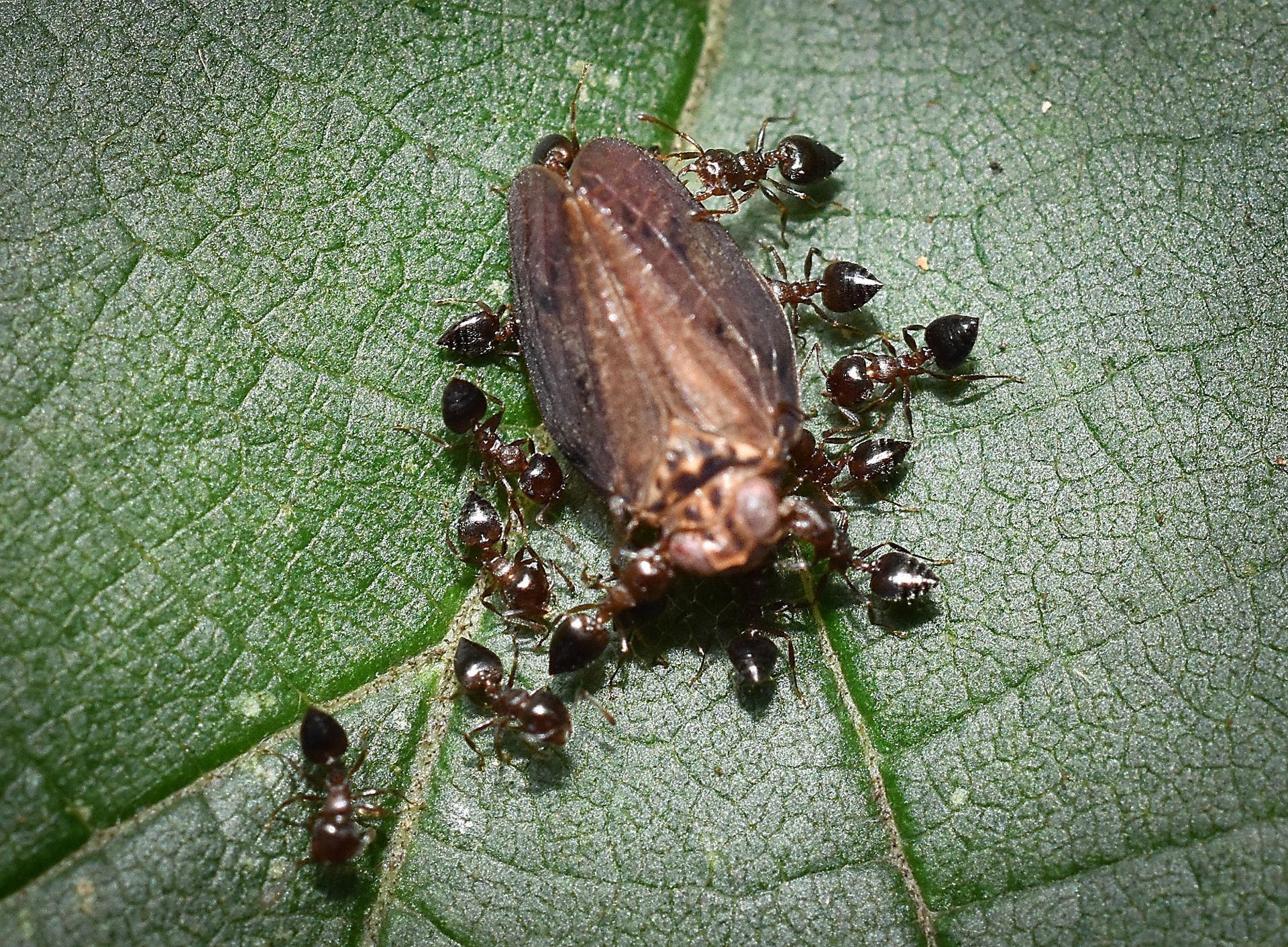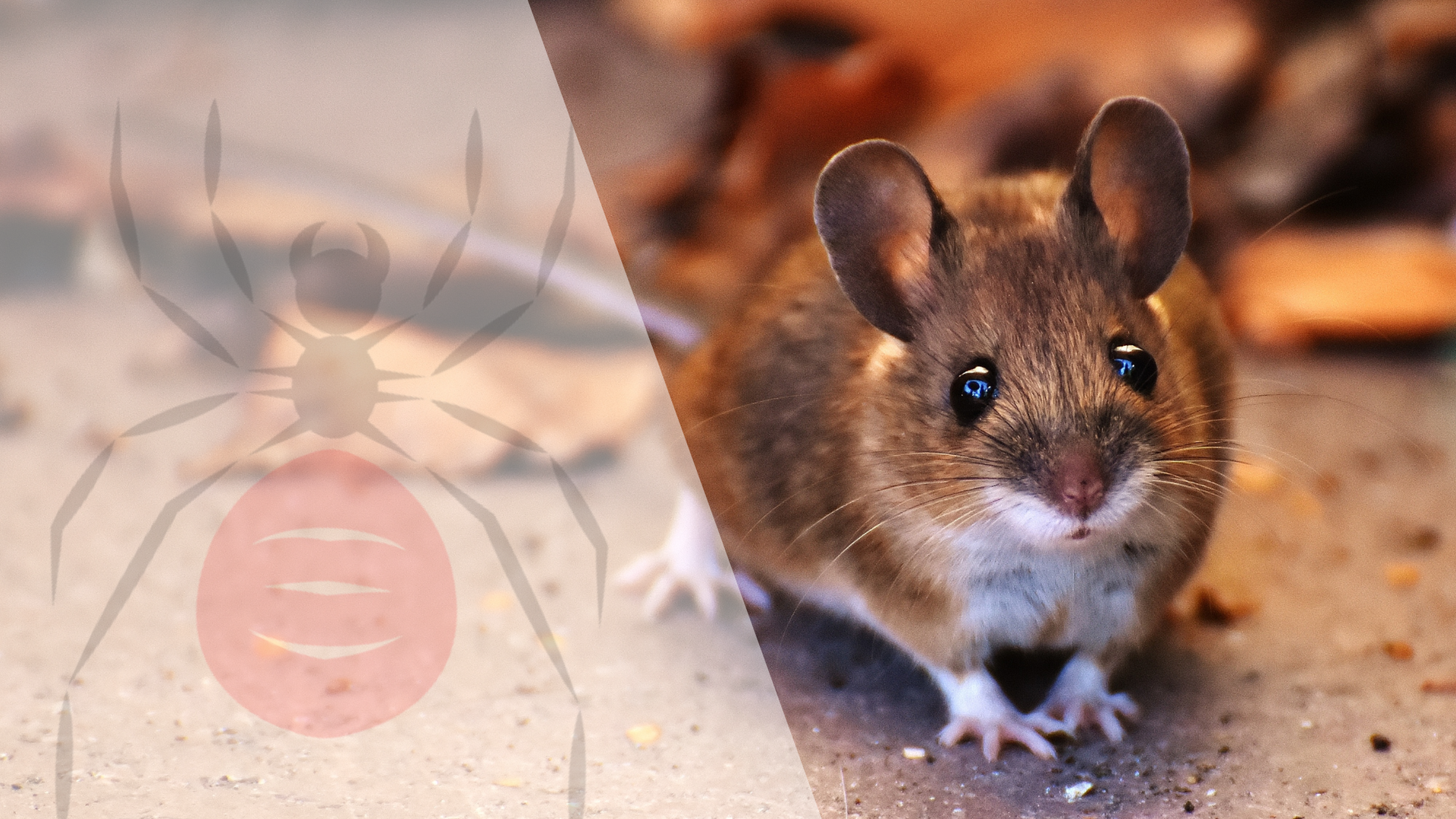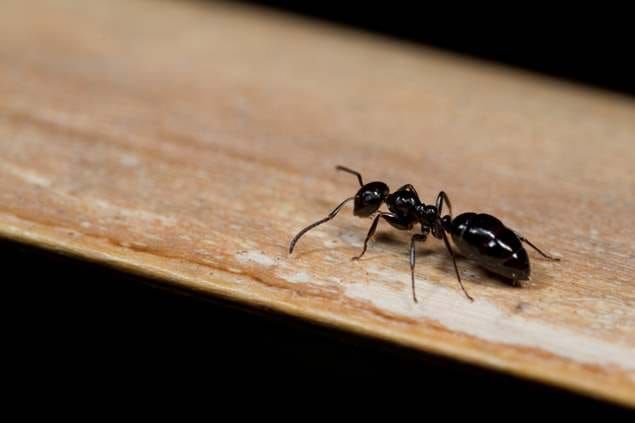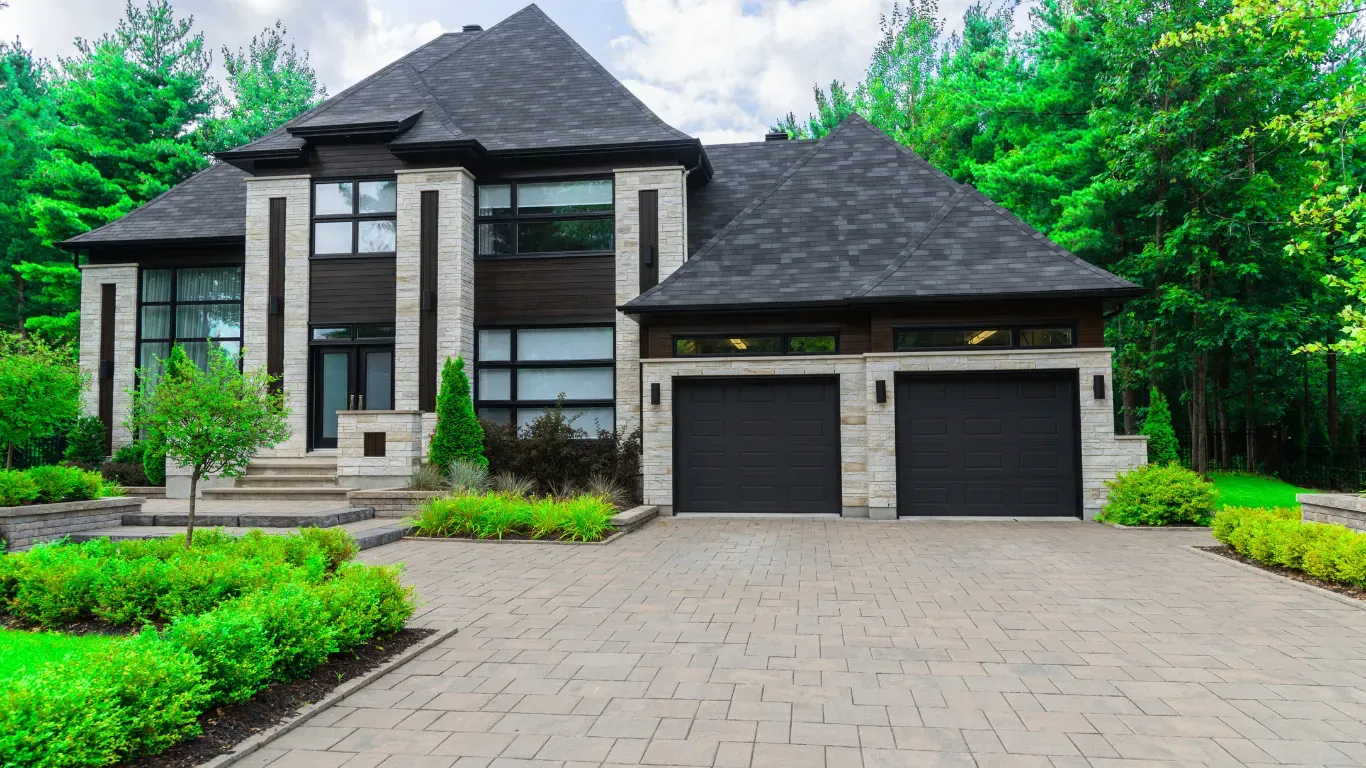What do ants eat?
Written by
What kind of ants are found in NJ?

Ants are one of the most successful groups of insects. They are social insects that live in colonies which are usually located in the ground, but they may enter buildings for shelter and/or food. Ants feed on practically every kind of food, but those entering homes are looking for sweets and/or protein-containing substances. About 700 species of ants occur in the United States and Canada. Of these, only about 25 species commonly infest homes. The biology and habits of each ant species are different, so a detailed knowledge of these for each species is necessary for effective control.
Acrobat Ants
Acrobat Ants: Crematogaster spp.
What is an Acrobat Ant?
Acrobat ants derive their name from their unique ability to raise their abdomen over their thorax and head, particularly when disturbed. While they may be considered a minor nuisance compared to other ant species, acrobat ants can bite when their colony is disrupted. These ants come in various species, ranging from light brown to black, and are found across the United States, even at altitudes of up to 8,000 feet.
Identification
Pest Stats:
Color: Light brown to black, sometimes multicolored.
Legs: They have 6 legs.
Shape: Heart-shaped abdomen.
Size: Workers average about 1/8” (3.2 mm) in length.
Antennae: Yes.
What Do Acrobat Ants Look Like?
Acrobat ants are characterized by their light brown to black coloration, with workers typically measuring around 1/8” (3.2 mm) in length. Queens, on the other hand, are generally larger, with sizes reaching up to 3/8” (10 mm). They have a segmented body, and when viewed from above, their abdomen resembles a heart shape. These ants possess a stinger, and their antennae feature 11 segments with a 3-segmented club.
Signs of an Infestation
Identifying an acrobat ant infestation involves recognizing the following signs:
Ant Trails: Look for actual ant trails on wires, utility lines, and pipes entering walls. Acrobat ants may forage up to 100 feet from their nest in search of resources, so check along the foundation for trailing ants.
Debris: Ants often deposit debris like dirt and wood scraps as they excavate their nests, providing another clue of infestation.
Siding Damage: If your home has siding, watch for pieces of foam insulation, which could indicate an acrobat ant nest behind the siding.
Moisture Damage: Check for signs of moisture damage around the structure, as it can attract acrobat ants, carpenter ants, and termites. Be vigilant for peeling paint, mold or fungal growth, or deteriorating wood near soffits and window frames.
Acrobat Ant Prevention
Homeowners seeking to prevent acrobat ant infestations can take several measures:
Professional Pest Management: Consider collaborating with a licensed pest professional, such as Resolve Pest Management in NJ, to implement preventative pest management strategies.
Sealing Entry Points: Seal any cracks and crevices in exterior walls to keep ants out.
Moisture Control: Address moisture issues around your home to deter ant attraction. Check for signs of water damage and mold.
Home Maintenance: Regularly inspect your home for deteriorating wood and other structural issues that may invite ants.
Carpenter Ants
Carpenter ants get their name because they excavate wood in order to build their nests. Their excavation results in smooth tunnels inside the wood (formicarium). Carpenter ants range in size from one-quarter inch for a worker ant to up to three-quarters inch for a queen.
Pest Facts:
Color
Varies depending on species, from red to black or a combination. The two most common species are black.
Legs
Six
Shape
Segmented; oval
Size
5/8 inches
• Size ranges from one-fourth inch for a worker ant to up to three-fourths inch for a queen in the most common species.
• May range from red to black in color.
• Build nests in deteriorating, moist wood; often the colony will extend its nest into adjacent, sound wood.
• Are commonly found in porch pillars and roofs, window sills, telephone poles, live and dead trees, rotting logs and stumps and wood in contact with soil.
• Do not actually eat the wood removed during nest-building activities; rather, deposit it outside entrances to the colony in small piles.
Habits
All species mainly attack wood that is or has been wet and damaged by mold. Even though these ants first invade wet, decayed wood, they may soon begin building paths through dry, undamaged wood. They usually come into buildings through cracks around doors, windows, or through holes for wires.They will also crawl along overhead wires, shrubs, or tree limbs that touch the building far above the ground.
Habitat
Carpenter ants build their nests outdoors in various wood sources, including tree stumps, firewood or landscaping. They need a constant water source to survive. They will enter homes through wet, damaged wood.
Threats
Carpenter ants damage wood through their nest building. If they gain entry to a structure, they pose a property threat. They can convey a painful bite with pronounced mandibles and injection of formic acid into the wound.
Prevention
Because carpenter ants require a water source, eliminate sources of moisture or standing water. Keep tree branches and other plants cut back from the house. Sometimes pests use these branches to get into your home. Make sure that there are no cracks or little openings around the bottom of your house. Sometimes pests use these to get into your home. Make sure that firewood and building materials are not stored next to your home. Pests like to build nests in stacks of wood.
Odorous House Ant
This ant gets its name from the strong, rotten coconut-like smell it gives off when crushed. These tiny insects range in size from one-sixteenth of an inch to one-eighth of an inch long.
Pest Facts:
Color
Brown or black
Legs
Six
Shape
Segmented; oval
Size
1/16-1/8 inches
Habits
Odorous house ants like to eat sweets, especially melon.
Habitat
Typically living for several years, these ants make their homes in exposed soil and wall voids.
Threats
These ants do not pose a public health risk, but they can contaminate food and should be avoided.
Prevention
Eliminate standing water. Pests such as odorous house ants are attracted to moisture. Keep tree branches and other plants cut back from the house. Sometimes pests use these branches to get into your home. Make sure that there are no cracks or little openings around the bottom of your house. Sometimes pests use these to get into your home. Make sure that firewood and building materials are not stored next to your home. Pests like to build nests in stacks of wood.
Pavement Ants
Pavement ants get their name because they make their nests in or under cracks in pavement. They can infest structures.
Pest Facts:
Color
Dark brown to blackish
Legs
Six
Shape
Segmented; oval
Size
1/8 inches
Antennae
Yes
Habits
These ants will eat almost anything, including insects, seeds, honeydew, honey, bread, meats, nuts and cheese.
Habitat
These ants live in or under pavement cracks.
Threats
These ants do not pose a public health risk, but they can contaminate food and should be avoided. They are not aggressive, but can bite and sting.
Prevention
Eliminate standing water. Pests, such as ants, are attracted to moisture. Keep tree branches and other plants cut back from the house. Sometimes pests use these branches to get into your home.* Make sure that there are no cracks or little openings around your house. Sometimes pests use these to get into your home. Make sure that firewood and building materials are not stored next to your home. Pests like to build nests in stacks of wood.
Get Quick, Efficient Pest Control & Exterminating
When pests invade your home, waiting isn't an option. At Resolve Pest Management, we understand how urgent these situations can be. That’s why we offer 24-hour emergency pest control services to residents in Lacey, NJ and Bayville, NJ. Whether it’s rodents, insects, or wildlife, our expert team is available day or night to protect your home and restore your peace of mind.
Our treatments are family and pet-friendly, ensuring that your loved ones—including the furry ones—are safe during and after service. We know your time is valuable, which is why we provide rapid scheduling, getting you the help you need, right when you need it.
If you're dealing with a pest emergency, don’t wait! Contact Resolve Pest Management today for immediate assistance. We're here to help make your home pest-free and comfortable again.
24-Hour Emergency Pest Control
We know pests can strike at any time- day or night. Resolve Pest Management is here to help 24 hours a day.

Family & Pet-Friendly Treatments
Protecting loved ones- furry or not is our #1 priority. We use pet-friendly treatments to give peace of mind.

Testimonials
"Resolve Pest Management is absolutely wonderful. Carlos and his team do thorough work and will put your mind at ease. They explain everything that needs to be done or what they suggest should be done. When we first called, Carlos showed up and checked every area of the house. Not only did he handle the mouse issue, he also found termite damage that was unknown to us. Since then, we have regular maintenance and have even called them other issues like bees. The receptionist is also very professional and kind, working with our availability. My family and I highly recommend Resolve Pest Management."
Tonianne D.
Barnegat Township NJ
Get on Schedule Today













